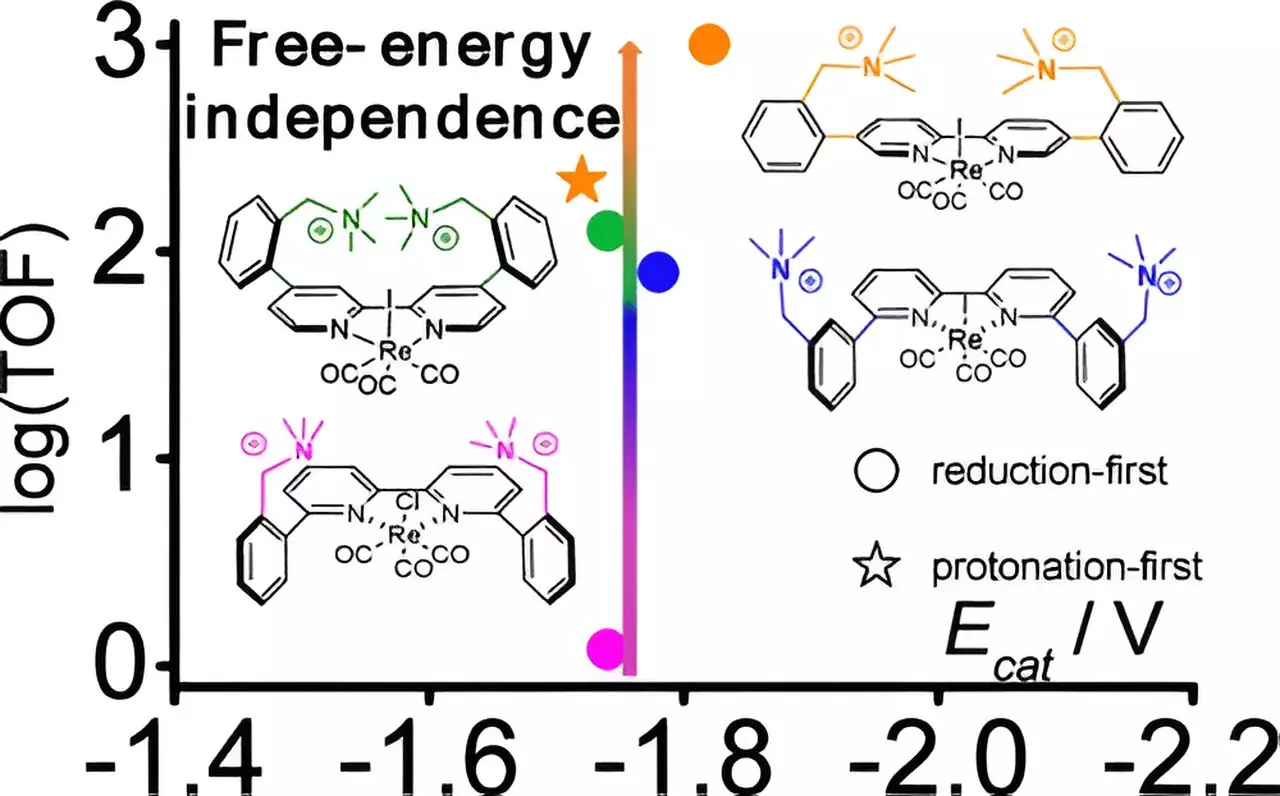As climate change becomes an increasingly pressing global issue, the need for effective strategies to reduce carbon dioxide (CO2) emissions is paramount. CO2 is notorious for its pervasive role in the greenhouse gas emissions produced by various sectors including electricity generation, transportation, and intensive industrial processes. One promising technique under investigation is the electrochemical reduction of CO2, a technology that aims to convert harmful greenhouse gases into useful and renewable energy sources. Researchers are actively searching for advanced catalysts that can facilitate this process, enabling efficient conversion while minimizing energy consumption.
The electrochemical reduction of CO2 is an innovative approach that, when paired with renewable electricity sources, has the potential to create sustainable fuels such as methanol and ethanol. These products are not only viable alternatives to fossil fuels but can also be used in various energy applications. However, a significant barrier to the effective implementation of this technology has been the development of a catalyst that is both affordable and efficient in its function.
Recent efforts, particularly by a team of researchers from the U.S. Department of Energy’s Brookhaven National Laboratory, in collaboration with Yale University and the University of North Carolina at Chapel Hill, have yielded promising advancements. Their research, recently published in the Journal of the American Chemical Society, highlights substantial improvements in catalyst performance, potentially transforming the future of CO2 reduction technologies.
The research team, led by chemists including Gerald Manbeck, focused on an already existing catalyst comprising the metal rhenium. Their primary innovation lies in the modification of this catalyst through a process called “decoration.” By introducing positively charged molecules, or cations, to the catalyst at various distances from the central rhenium atom, the scientists observed significant changes in catalytic effectiveness. Remarkably, they achieved a staggering increase in the rate of catalytic reactions—by approximately 800 times—merely through strategic modifications of the catalyst’s geometric configuration.
The findings of this research underline not only the potential of rhenium-based catalysts but also the importance of catalyst design in enhancing performance without a significant increase in energy input. Through computational models, the team unraveled that the cations played a crucial role in stabilizing the later stages of the catalytic process, unveiling pathways that are typically overlooked in conventional molecular catalysts.
Utilizing various methodologies, the research team was able to characterize their catalysts thoroughly. Techniques such as cyclic voltammetry and infrared spectroelectrochemistry provided invaluable insights into the energy dynamics of the reaction and structural transformations occurring during catalysis. The deployment of a unique apparatus enabled the researchers to conduct exhaustive measurements at the interface between the catalytic solution and the electrode surface, enhancing their understanding of the catalytic mechanisms at play.
This combination of innovative research techniques showcases the increasing sophistication of analytical methods in the field of electrochemistry. By addressing the minutiae of how catalysts operate at a molecular level, the team is poised to influence future designs and implementations of catalytic systems for CO2 reduction.
Looking forward, the researchers plan to further expand their work by integrating semiconductor light absorbers, including silicon, into their catalytic systems. The goal is to harness solar energy to provide additional energy inputs for the CO2 conversion process, thereby minimizing reliance on direct electrical energy. This goal aligns with broader energy transitions aimed at utilizing renewable sources to drive chemical transformations.
The mission of CHASE, the Center for Hybrid Approaches in Solar Energy, echoes this vision, focusing on advancements in photoelectrodes that leverage sunlight to foster chemical reactions that convert CO2 and water into liquid fuels. The fusion of light and electrochemistry embodies the potential of innovative research to address two critical challenges: carbon emissions and energy sustainability.
The advancements made in the pursuit of improved CO2 reduction strategies underline the significance of multidisciplinary collaborations in addressing climate change challenges. As researchers continue to refine their methods and explore new avenues, the developments surrounding the electrochemical reduction of CO2 may provide the fundamental shifts needed to integrate sustainable practices into our energy landscape effectively. Our ability to design more efficient and environmentally-friendly catalysts could lay the groundwork for a new era of sustainable energy solutions, turning emissions from a threat into a resourceful opportunity.


Leave a Reply